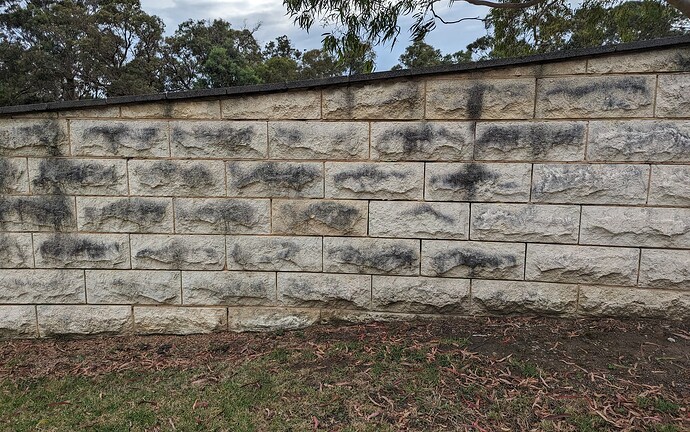What do you think this is and how would you clean it? I think it is sandstone with lots of gloeocapsa magma… and I was going to softwash with 2% - 4% SH to see if it shifts… Hopefully it does and then I’ll post treat with biocide (and go back every 6 months to maintain with biocide). Wdyt?
There’s quite a few buildings using this blockwork… I’m hoping I don’t need to hit it too hard.
I’d welcome any guidance and would be happy to take any of your suggestions, recommendations or do’s \ don’ts… How careful do I need to be with pressure on sandstone? Assuming it is sandstone! Can I go as strong as needed or do I have to be careful with this brick?
With thanks, John
easy solution, get owners permission and do a test spot in an inconspicuous area. I have a bucket of stuff I travel with for estimates. One bottle has SH and water, another a degreaser, I have jugs of xylene, denatured alcohol, mineral spirits, citric, etc etc.
Be careful with pressure, it is already missing stuff in the joints which normally means that the mortar was bad when applied or that the wall is moving. No idea without seeing the whole enchilada.
Yes, great reply. I saw the customer today. These walls have shells growing out of them. It looks like coral! I can only be gentle as someone previously has blasted the mortar away in many places! Any ideas?
do it the racer way, 12v and rinse, adjust mix and dwell times accordingly after first pass. Super low pressure. I don’t know what shells are growing out of stone, but it sounds like a fungus which means you might need a fungicide since you can’t use pressure. I love the turbo for retaining walls, but sandstone is super soft and this mortar is buggered already.
I’d tell the customer in the estimate that they have preexisting damage (mortar missing) and that it should be repointed. It’s probably a facade, but I have no idea based on the pic.
1 Like
Great feedback thanks. I think the shells and coral looking sediments is all part of the natural sandstone blocks. I found out that the last contractor was paid 20k for doing the whole church (just before-COVID). It has not been treated since. They can’t afford this now of course. My plan is to attack that entrance wall as a test site. Fill the sandstone blocks with water so that the SH does not penetrate, then apply 2% SH with really sticky surfactant and see what happens (and see how many times I need to rinse and repeat). I can then gauge how much chem I need to use and quote from there. Is this what you’re thinking?
I don’t know, there are white, pink, red, and a brownish sandstone in my area and they are all different. The sandstone I currently own for my steps is quite tough, and the sandstone in my retaining walls is quite robust, but I have scraps of others that were quite soft.
Test in an inconspicuous place, take notes. A little trial and error will save you a lot of $$ and time later. You could always call up the contractor and say you were thinking about cleaning it and see what they say it is. It could be a facade, or some manmade stone with crap put in it. I’ve called contractors several times, it is about a 50/50 shot.

























